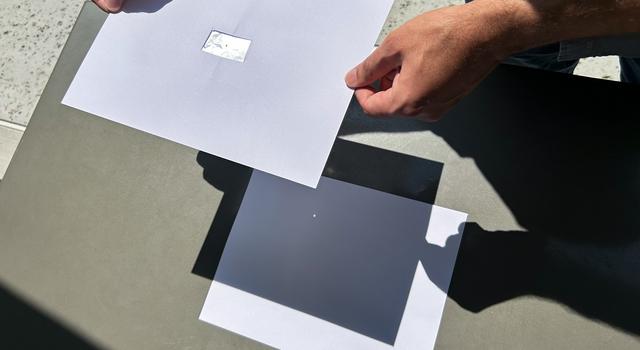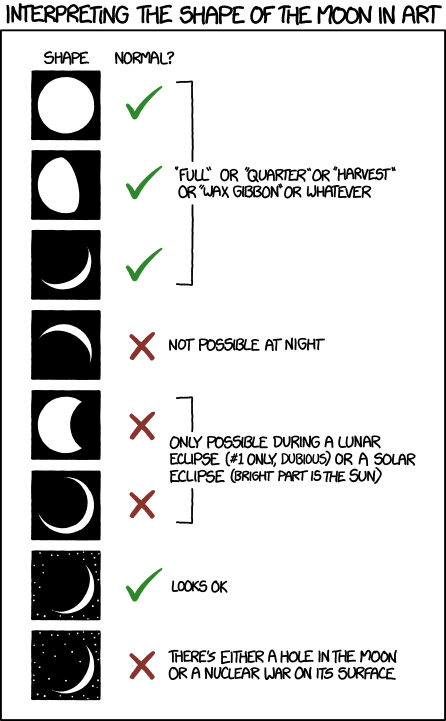Because if there is one thing that I am great at after homeschooling for 14 years, it is making a comprehensive unit study for homeschoolers!
My favorite thing about creating a unit study around an upcoming event is that the entire world becomes your hype man. Kids pick up on how excited everyone is about the eclipse, and learning more about it becomes just another way to engage with that excitement, mwa-ha-ha!
What you see before you is THE most comprehensive solar eclipse unit study for homeschoolers. Almost all of it can be leveled up and down, usually just about simultaneously so you can work with your kids of different ages together. Pick and choose what you've got the time and materials for, interspersing activities you know your kids will love with activities that will stretch their skills and interests a little.
Anchor Charts, Infographics, and Other Decorations
Because when you homeschool, even your decorations are educational!
 |
| image credit: NASA/Tyler Nordgren |
NASA posters and graphics. This poster is a good US Geography resource for a middle-grade kid to use to trace the eclipse's path on a map. The back of this poster is an excellent anchor chart to use with any age to inspire further research.
April 8 Eclipse Activities
Do these activities during the partial phase of the eclipse.
 |
| pinhole camera image via NASA Jet Propulsion Laboratory |
Art and Craft Projects
Because if you're not doing a weird and unwieldy craft project, are you even homeschoolers?
 |
| image credit: xkcd |
 |
| mosaic sundial image via Marvelously Messy |
Astronomy Activities, Crafts, Games, and Resources
This time period around the eclipse is the BEST time to get a kid excited about astronomy, not to mention make memories of this special, once-in-a-homeschool-education opportunity.
Moon journal. The most educational way is to have kids make their own from scratch by tracing a bottle cap into their observation journal or onto a piece of paper, but here's a printable template if you'd rather have a leg up. Have them sketch the Moon's phase every night and record the date, time, and weather. Incorporate a simple meteorology study by also having a kid record the temperature, air pressure, wind speed, etc. Kids can make DIY versions of all those measuring tools, or you could splurge on a simple weather monitoring tool.. or a fancy one!
paper telescope models. These paper models are quite fiddly, so I wouldn't even offer them to anyone other than the craftiest of high schoolers. My kid was practically born with a craft knife in her hand, and even SHE found them tricky! But if you've got a mechanically-minded kid who's very interested in the instruments of astronomical observation and exploration, it can be worth even making these yourself so that they can have a tactile representation of these instruments. The models aren't so delicate that younger kids couldn't incorporate them into their small-world play.
phases of the Moon demonstration and model. THIS is how you teach the phases of the Moon to kids of every age! The Oreo model is just for fun, but the prospect of making it is very good incentive to attend to the lesson, ahem. And here's a similar worksheet to keep them busy during their sibling's gymnastics lesson...
Planet Hunters TESS Citizen Science Project. High schoolers can help scientists discover exoplanets by analyzing images from the TESS mission to look for eclipses of other stars. The project is technically complete as of right now, but does expect to obtain more data to analyze. This would work as a lab for a high schooler wanting to study Astronomy and earn a Lab Science credit on their high school transcript.
sidewalk chalk Solar System model. In the lead-up to the 2017 eclipse, my kids researched each planet and drew its picture on a labeled index card, then taped the cards to popsicle sticks. One beautiful afternoon, we headed out on our straight city-wide walking trail and we measured and placed the planets in their correct spots along the trail. It was just as fun walking back to the car, because instead of being tired and cranky, the kids kept racing ahead to find and reclaim their planets! SUCH a good way to reinforce a sensorial understanding of measurement AND astronomy!
solar eclipse foldables. For those whose kids love lapbooks and mini books, I've got you! These fill-in-the-blank infographics are also helpful for kids to use as illustrations when they write paragraphs or essays about the eclipse. This mini book is better for younger kids, who can sneak in a little scissors practice, too, mwa-ha-ha!
Solar Jet Hunter Citizen Science Project. High schoolers look for and mark solar jets to help scientists understand this phenomenon. This would work as a lab for a high schooler wanting to study Astronomy and earn a Lab Science credit on their high school transcript.
Solar oven. Even the littlest homeschoolers can help make a solar oven that will melt a s'more! Add a hot dog solar oven for a complete camping meal. Don't do this pizza box oven, though, because it's kind of crap. Older kids can do their own experimentation and engineering, and if you're really serious about it, you can invest some time and money into making an absolutely superb solar oven that will properly cook food.
sundials. Shadows are an accessible way to introduce any age of homeschooler to a study of the Sun, and kids who are studying shadows LOVE to make sundials! There are a million ways to make a sundial, from the preschooler-friendly to these more sophisticated papercrafts.
Sungrazer Citizen Science Project. This project is for high schoolers or very interested middle schoolers. In it, you scan through images of the Sun taken by the SOHO Observatory, looking for previously undiscovered comets! This would work as a lab for a high schooler wanting to study Astronomy and earn a Lab Science credit on their high school transcript.
Sun prints. All you need is a pack of cyanotype paper to make the coolest prints and shadow art! When we did that set above, way back in preparation for the 2017 eclipse, we were all fascinated by the way the sun print plus the shadow print of the rectangular prism made a perfect cube on the paper. If your kids (or you!) are extra crafty, you can even buy cyanotype FABRIC! To add some academic rigor, combine sun prints with this free worksheet set.
History, Geography, and Social Studies Activities, Crafts, Games, and Resources
Learn about the cultural significance of eclipses around the world and throughout time.
.jpg) |
| Again with those dirty fingernails! I'm pretty sure that was the year that I put a nail brush in her Easter basket... |
gingerbread Stonehenge. This is a delicious way to study ancient astronomy and the importance of the Sun to our ancestors. To be sure, it's not the most academically rigorous project, but it makes a fun capstone to a short unit on Stonehenge and its astronomical purpose.
Cool Stuff to Buy
If you've got a little extra room in your homeschool budget, splash out with these educational materials that will encourage and expand your kids' interest.
- glass prism set. Younger kids can spend years playing with these, exploring rainbows and shadows and angles and light. Now that my kids are grown (sob), I've made little macrame hangers to put them in all my sunny windows so I can still enjoy them!
- planet stickers. My kids loved these even into high school! I let them place them (in planet order, of course!) on the wall of our long front hallway, and it's a decoration that we still all enjoy. I mean, if you don't have giant stickers of all the planets in order in your front hallway, how will your guests know that you're homeschoolers?
- Moon sticker. We had to put this in a different room from the planet stickers, obviously, because otherwise the scale would be wrong.
- star stickers. Kids do not seem to know about star stickers these days, because every kid I've ever showed them to has been SO EXCITED--especially when I explain that they go on your bedroom ceiling! My own homeschooler, as a high schooler studying astronomy, actually used star stickers to put all the major constellations all over the walls and ceilings of our entire house. It's kind of my favorite thing!
- sunprint paper. Explore shadows or make awesome art.
P.S. Want to follow along with my craft projects, books I'm reading, road trips to weird old cemeteries, looming mid-life crisis, and other various adventures on the daily? Find me on my Craft Knife Facebook page!

.jpg)
.jpg)
.jpg)
.jpg)



No comments:
Post a Comment